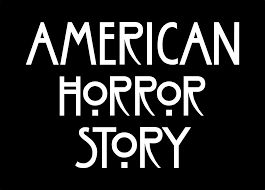Table of Contents

Introduction
In the realm of television, few series have managed to captivate audiences quite like “American Horror Story.” Created by Ryan Murphy and Brad Falchuk, this anthology-style show has been a staple in the horror genre since its debut in 2011. With its unique storytelling, intricate character development, and spine-tingling plots, “American Horror Story” has become a cultural phenomenon. In this article, we will delve deep into the world of “American Horror Story,” exploring its themes, characters, and the terror it brings to our screens.
The Evolution of Horror
The Birth of the Anthology Series
Before we dive into the specific seasons of “American Horror Story,” let’s discuss the concept of an anthology series itself. This format allows the creators to explore new storylines and characters in each season, making it a fresh experience for viewers. It’s a departure from the traditional serialized format and has been a game-changer in the world of television.
Season by Season Terror
One of the show’s strengths is its ability to reinvent itself every season. Each installment is a self-contained story with its own set of characters and horrors. From the haunted house of “Murder House” to the eerie asylum of “Asylum” and the twisted carnival of “Freak Show,” each season brings something new to the table.
Themes that Haunt
Exploring Fear
“American Horror Story” thrives on tapping into our deepest fears. It doesn’t just rely on supernatural elements; it delves into the psychological horrors that plague the human mind. Fear of the unknown, fear of betrayal, and fear of the darkness within us are recurring themes that send shivers down our spines.
Social Commentary
While horror is the central theme, the show doesn’t shy away from addressing societal issues. It uses horror as a lens to examine topics such as discrimination, mental health, and the abuse of power. This adds depth to the narrative and elevates it beyond a mere scare-fest.
Unforgettable Characters
The Enigmatic Tate Langdon
Evan Peters’ portrayal of Tate Langdon in “Murder House” remains one of the most memorable characters in the series. His complexity as a character, blending love and darkness, left a lasting impression on viewers.
Sister Jude: A Study in Redemption
Jessica Lange’s Sister Jude in “Asylum” showcases the show’s ability to create multifaceted characters. Her journey from strict authority to a search for redemption is a captivating arc.
The Impact on Horror
“American Horror Story” has had a significant influence on the horror genre in both television and film. Its willingness to push boundaries and tackle taboo subjects has inspired other creators to take risks. This has led to a resurgence of interest in horror as a legitimate art form.
Conclusion
In the world of television, “American Horror Story” stands as a testament to the power of storytelling. It combines fear, social commentary, and unforgettable characters to create a truly unique viewing experience. As we eagerly await each new season, one thing is certain: “American Horror Story” will continue to haunt our screens and our nightmares.
FAQs (Frequently Asked Questions)
- Is “American Horror Story” suitable for all audiences? While it has a dedicated fan base, the show is known for its mature themes and graphic content. Viewer discretion is advised.
- Are the seasons of “American Horror Story” interconnected? While each season is a standalone story, there are subtle connections and recurring actors that link them all together.
- Who are some of the recurring actors in the series? Sarah Paulson, Evan Peters, and Jessica Lange are some of the actors who have appeared in multiple seasons.
- Which season is considered the scariest by fans? Opinions vary, but “Asylum” and “Roanoke” are often cited as the most frightening seasons.
- Is “American Horror Story” still in production? As of my knowledge cutoff date in September 2021, the show was still being produced. Please check for updates on its current status.
Search us on Google by typing Interestopedia.com
